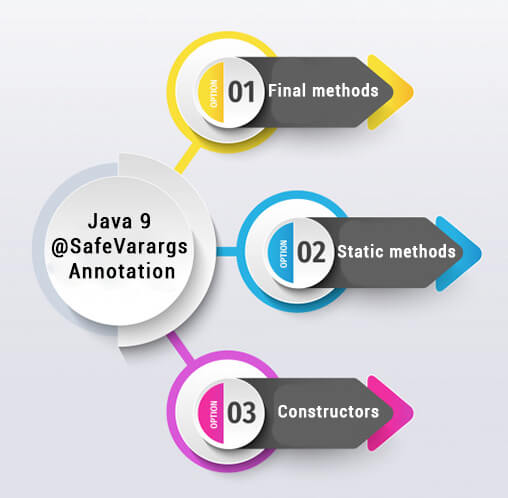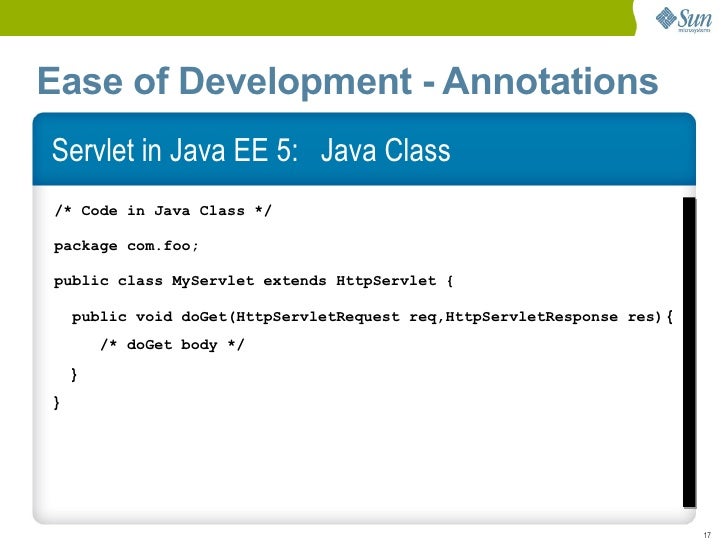
JAVA ANNOTATIONS FOR IN DEVELOPMENT CODE CODE
Furthermore, now you have adequate information about annotation in Java to not only work with them but also be able to understand how annotations can be used to improve your code and minimize the chances of making logical errors. Hopefully, you can now easily answer the question, “what are annotations in Java”. See Also: MVC vs MVP vs MVVM – Top 10 Differences You Should Know Moreover, annotations are often overlooked whenever encountered in someone else’s code but it must have been clear by now how Java annotations can be a great addition to your Java tool kit. ConclusionĪs annotations are not compulsory, many Java developers prefer not to use them. See is placed above your Custom_Annotation definition: line of code signals the Java compiler and JVM that the annotation must be available at runtime through reflection. You can do this by annotating your annotation definition with the annotation. These annotations then can be accessed through Java Reflection, to give instructions to your program, or a third-party API. Although, it is possible to define your custom annotations that would be available at runtime. Usually, an annotation in Java is not present in the Java code after the compilation. public String toString() Accessing Java annotations via Java reflection Look at the following piece of code for example: 1. It provides information about the data used in the program. Java annotations are used to provide metadata for a program written in Java. We will be further discussing in detail what are annotations in Java, how do they work and how you can use them in your code. Meta data is the additional information which can be used for any class, interface.
JAVA ANNOTATIONS FOR IN DEVELOPMENT CODE HOW TO
Despite being that common, it is still possible that many Java developers especially beginners do not know what are annotations in Java or how to use them. Java annotations are used to provide the meta data to our Java code. Whether in frameworks like Spring, JEE, Struts or in unit testing tools like JUnit, Java annotations are used across all of them.

Thanks.Īnnotation processing is the wrong way to go for you, from Wikipedia: If not please comment and I will clarify. All the metadata is clubbed into the POJO Java file along with the code which helps the user to understand the table structure and POJO simultaneously during the development. To use an example from the Java documentation, they can help with the creation of boilerplate code. I hope my question is clear and inline with the rules. Hibernate annotations is the powerful way to provide the metadata for the Object and Relational Table mapping. Annotations can help programmers to write correct programs. and the do not provide any way of editing that element (which in my case represents a Method). I have found this tutorial () But this concerns creating a new class, not just changing a method. Obviously I extends AbstractProcessor in my code

I have found something about Java Reflection but I have not found any source to help me with what I am doing. ProcessingEnv.getMessager().printMessage(,"Not a method!", e)

If it is a valid annotation over a method So far I am using import .* and I have the following code, but I don't know how to go on from there private void processMethodAnnotations(RoundEnvironment env)įor (Element e : env.getElementsAnnotatedWith(Anno2.class)) A way to add every kind of code in the method (not just a way to. I am looking for a more generic solution if possible. My problem is how to add code to method test() Anno1 will have many possible combinations, but this is not my problem so far. This is a very simplified example of what I am trying to do. RetentionPolicy.SOURCE : retained at source level and ignored by the compiler RetentionPolicy. It has following options: RetentionPolicy.CLASS : retained by the compiler and ignored by the JVM. I mean, I am trying to use annotations to make the following code = "Option1") 1) Retention: It specifies how long the annotation will be in use. How can I change what a method is doing in Java ?


 0 kommentar(er)
0 kommentar(er)
